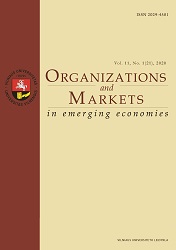Effects of Remittances on Poverty: Evidence in CEE Countries
Effects of Remittances on Poverty: Evidence in CEE Countries
Author(s): Mindaugas Butkus, Kristina Matuzevičiūtė, Kotryna RaupytėSubject(s): National Economy, International relations/trade, Developing nations, Economic development, Migration Studies, Socio-Economic Research
Published by: Vilniaus Universiteto Leidykla
Keywords: remittances; poverty; transition economies;
Summary/Abstract: The countries with a transition economy in the EU have experienced a rapid growth of labour migration and remittance flows during the last two decades. Remittances are improving household economic welfare, so it is important to evaluate how these financial flows may affect the poverty situation, as CEE countries are facing levels of poverty and inequality above the EU average. The paper examines the impact of remittances on poverty, using the panel of seven CEE countries conside red as advanced transition economies, over the period of 2006-2015. Pooled OLS, fixed effects, random effects, and 3-stage least squared estimators are used to estimate the poverty effects of remittances. The results show that remittances have a significant impact on three out of four poverty measures. Taking into consideration the endogeneity problem, it is estimated that a 10-per cent increase in remittances to GDP ratio will lead to a decline, on average, by 5.5 per cent in poverty headcount, and also by 3.7 per cent in poverty gap and 0.6 per cent in the risk of poverty. These results can be important for defining the policy measures on providing more efficient management of remittances.
Journal: Organizations and Markets in Emerging Economies
- Issue Year: 11/2020
- Issue No: 21
- Page Range: 69-82
- Page Count: 14
- Language: English

